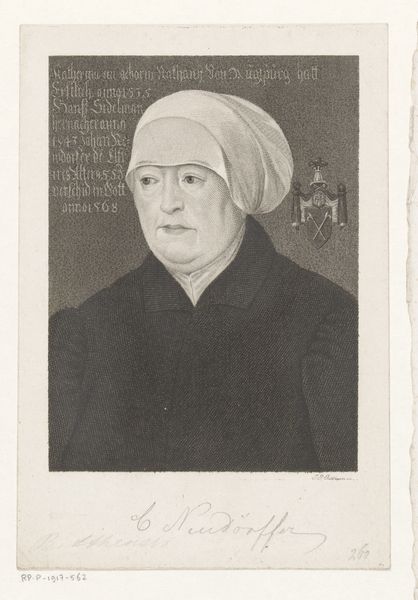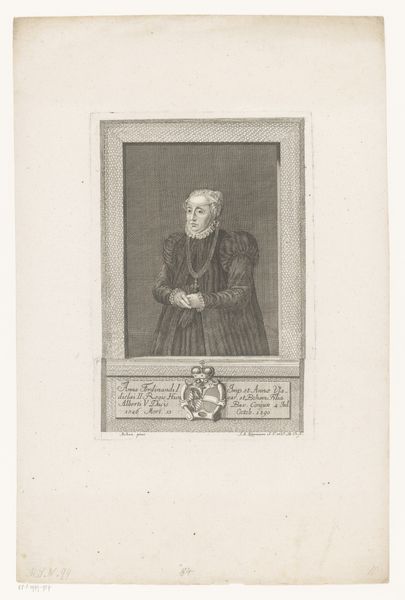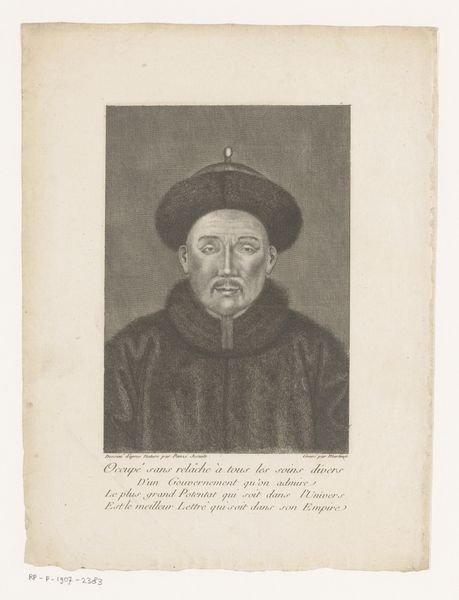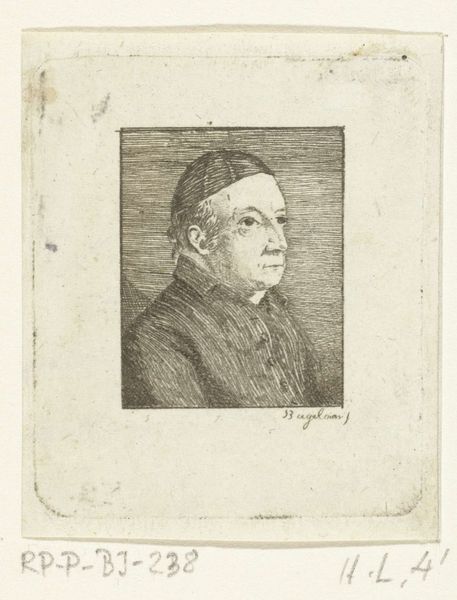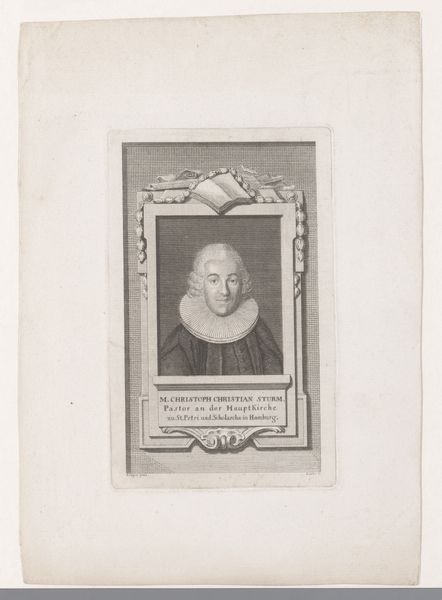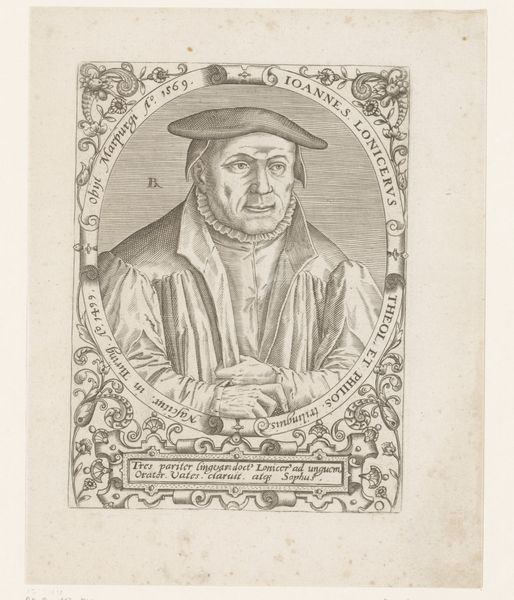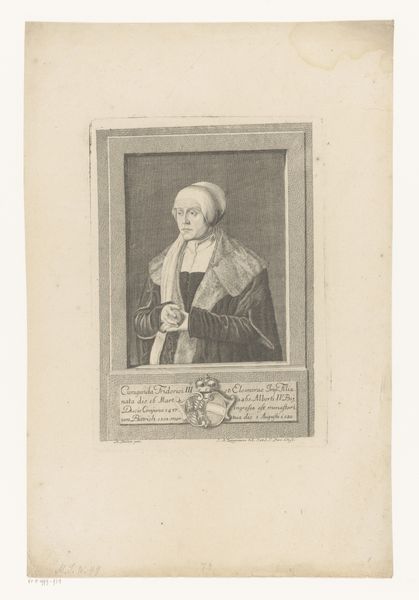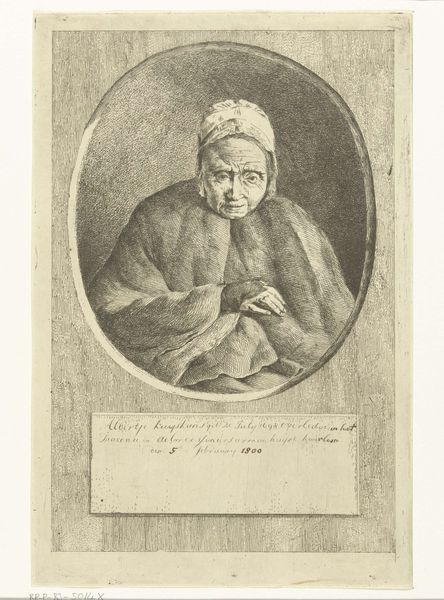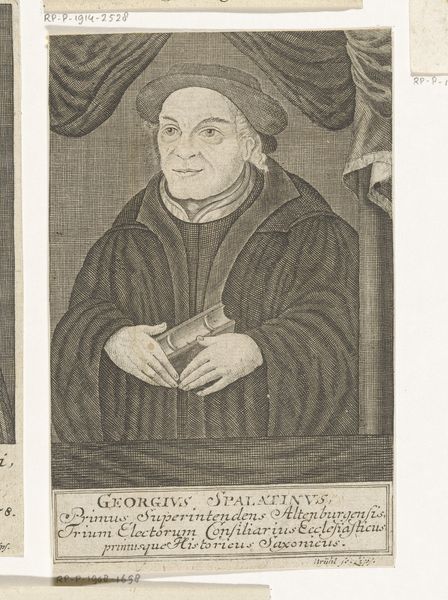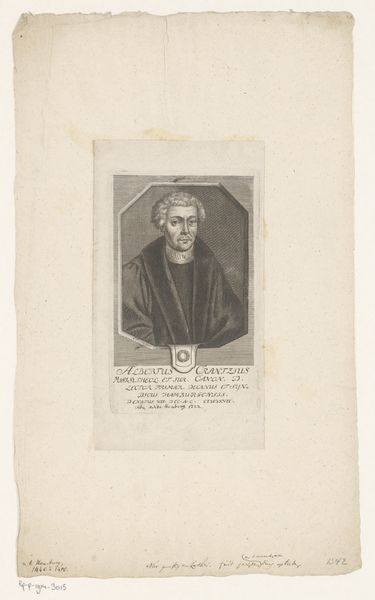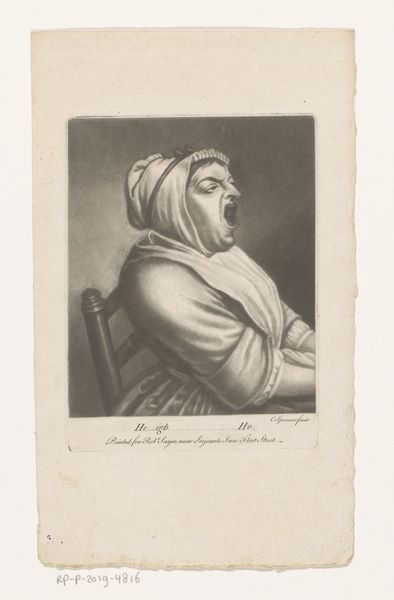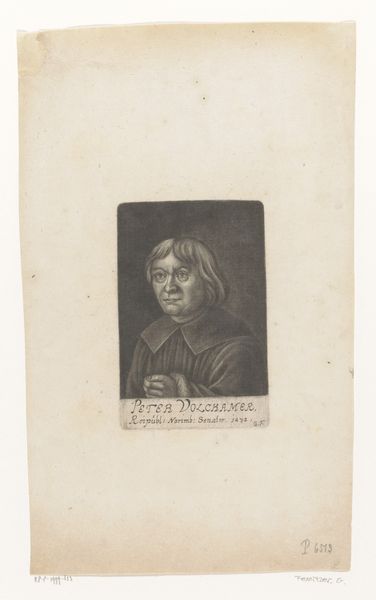
#
pencil drawn
#
photo of handprinted image
#
aged paper
#
toned paper
#
light pencil work
#
photo restoration
#
ink paper printed
#
light coloured
#
white palette
#
tonal art
Dimensions: height 181 mm, width 125 mm
Copyright: Rijks Museum: Open Domain
This is Johann Pleikhard Bittheuser’s “Portret van Katharina Neudörffer,” an engraving on paper. Engraving is an intaglio process, meaning that the image is incised into a surface, and then filled with ink. In this case, the artist would have used a tool called a burin to carve the image into a metal plate, likely copper. The matrix is inked, and then the surface is wiped clean, leaving ink only in the engraved lines. The printmaker then presses paper against the plate with considerable force, transferring the image. Look closely, and you can see the crisp lines and delicate shading achieved through this process. Engraving, because it is so labor-intensive, was often used for reproducing existing images, like paintings, making them available to a wider audience. The resulting prints were luxury goods, but more affordable than unique works of art. This portrait gives us a glimpse into the material world of early printmaking, where skilled labor met the demands of a growing market for images.
Comments
No comments
Be the first to comment and join the conversation on the ultimate creative platform.
